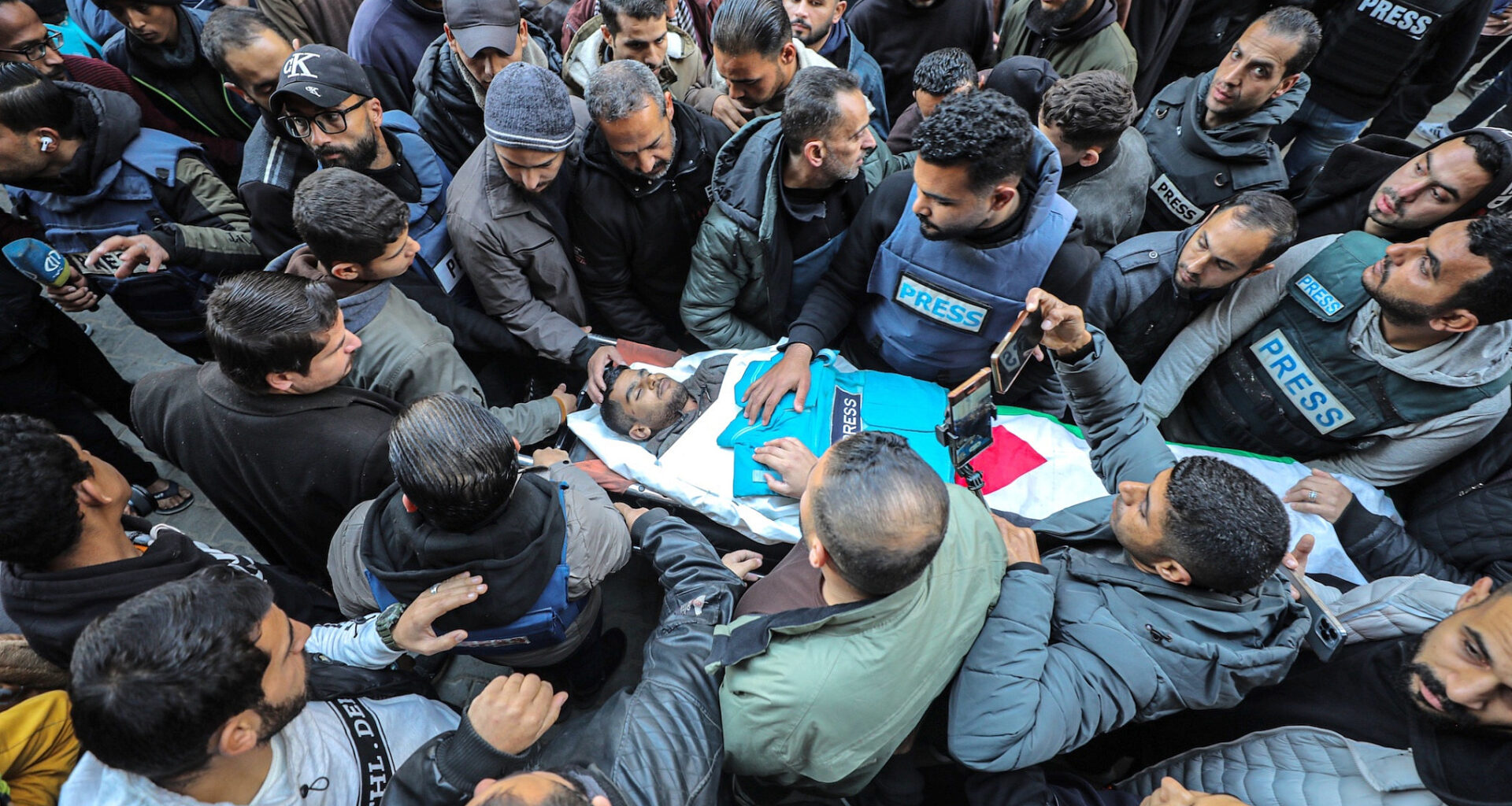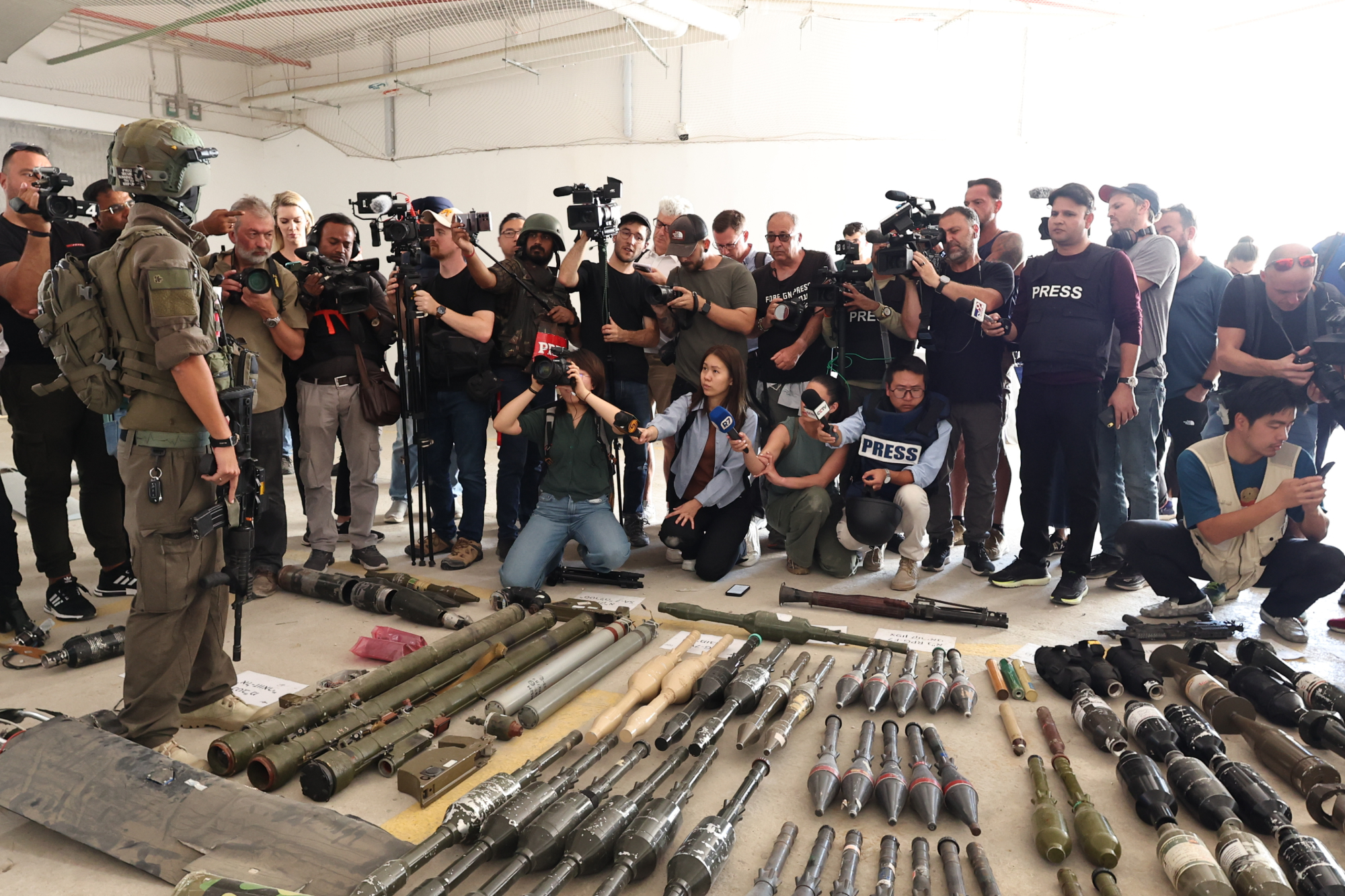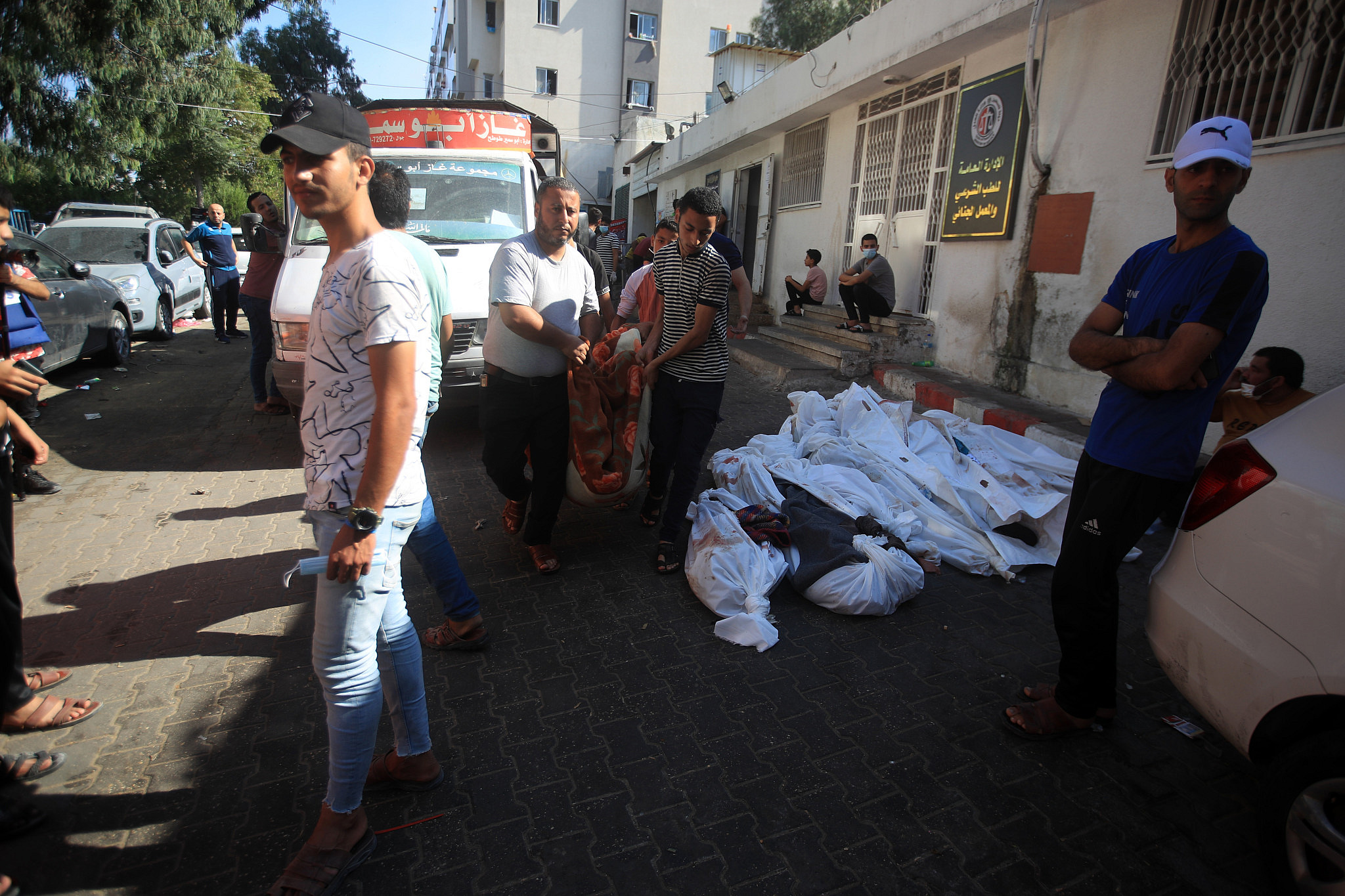In partnership with
The Israeli military has operated a special unit called the “Legitimization Cell,” tasked with gathering intelligence from Gaza that can bolster Israel’s image in the international media, according to three intelligence sources who spoke to +972 Magazine and Local Call and confirmed the unit’s existence.
Established after October 7, the unit sought information on Hamas’ use of schools and hospitals for military purposes, and on failed rocket launches by armed Palestinian groups that harmed civilians in the enclave. It has also been assigned to identify Gaza-based journalists it could portray as undercover Hamas operatives, in an effort to blunt growing global outrage over Israel’s killing of reporters — the latest of whom was Al Jazeera journalist Anas Al-Sharif, killed in an Israeli airstrike this past week.
According to the sources, the Legitimization Cell’s motivation was not security, but public relations. Driven by anger that Gaza-based reporters were “smearing [Israel’s] name in front of the world,” its members were eager to find a journalist they could link to Hamas and mark as a target, one source said.
The source described a recurring pattern in the unit’s work: whenever criticism of Israel in the media intensified on a particular issue, the Legitimization Cell was told to find intelligence that could be declassified and employed publicly to counter the narrative.
“If the global media is talking about Israel killing innocent journalists, then immediately there’s a push to find one journalist who might not be so innocent — as if that somehow makes killing the other 20 acceptable,” the intelligence source said.
Often, it was Israel’s political echelon that dictated to the army which intelligence areas the unit should focus on, another source added. Information gathered by the Legitimization Cell was also passed regularly to the Americans through direct channels. Intelligence officers said they were told their work was vital to allowing Israel to prolong the war.
“The team regularly collected intelligence that could be used for hasbara — say, a stockpile of [Hamas] weapons [found] in a school — anything that could bolster Israel’s international legitimacy to keep fighting,” another source explained. “The idea was to [allow the military to] operate without pressure, so countries like America wouldn’t stop supplying weapons.”
An Israeli Government Press Office (GPO) tour shows weapons and ammunition from the field used by Hamas on October 7, at the Julis Military Base, November 10, 2023. (Mishel Amzaleg/GPO)
The unit also sought evidence linking Gaza’s police to the October 7 attack, in order to justify targeting them and dismantling Hamas’ civilian security force, one source familiar with the Legitimization Cell’s work said.
Two of the intelligence sources recounted that, in at least one case since the war began, the Legitimization Cell misrepresented intelligence in a way that allowed for the false portrayal of a journalist as a member of Hamas’s military wing. “They were eager to label him as a target, as a terrorist — to say it’s okay to attack him,” one source recalled. “They said: during the day he’s a journalist, at night he’s a platoon commander. Everyone was excited. But there was a chain of errors and corner-cutting.
“In the end, they realized he really was a journalist,” the source continued, and the journalist wasn’t targeted.
A similar pattern of manipulation is evident in the intelligence presented on Al-Sharif. According to the documents released by the army, which have not been independently verified, he was recruited to Hamas in 2013 and remained active until he was injured in 2017 — meaning that, even if the documents were accurate, they suggest he played no role in the current war.
The same applies to the case of journalist Ismail Al-Ghoul, who was killed in a July 2024 Israeli airstrike along with his cameraman in Gaza City. A month later, the army claimed he was a “military wing operative and Nukhba terrorist,” citing a 2021 document allegedly retrieved from a “Hamas computer.” Yet that document stated he received his military rank in 2007 — when he was just 10 years old, and seven years before he was supposedly recruited to Hamas.
‘Find as much material as possible for hasbara’
One of the Legitimization Cell’s first high-profile efforts came on Oct. 17, 2023, after the deadly explosion at Al-Ahli Hospital in Gaza City. While international media, citing Gaza’s Ministry of Health, reported that an Israeli strike had killed 500 Palestinians, Israeli officials said the blast was caused by a misfired Islamic Jihad rocket and that the death toll was far lower.
Palestinians’ bodies are removed in the aftermath of the explosion at Al-Ahli Arab Hospital, Gaza City, October 18, 2023. (Mohammed Zaanoun)
An investigation by the UK-based research agency Forensic Architecture concluded that although the exact cause of the explosion remained inconclusive, it was likely an Israeli interceptor missile — not a Islamic Jihad rocket, nor an Israeli bomb — that struck the hospital.
The day after the explosion, the army released a recording that the Legitimization Cell had located in intelligence intercepts, presented as a phone call between two Hamas operatives blaming the incident on a Islamic Jihad misfire. Many global outlets subsequently considered the claim likely, including some who conducted their own investigations, and the release dealt a severe blow to the credibility of Gaza’s Health Ministry — hailed within the Israeli army as a victory for the cell.
A Palestinian human rights activist told +972 and Local Call in December 2023 that he was stunned to hear his own voice in the recording, which he said was simply a benign conversation with another Palestinian friend. He insisted he had never been a Hamas member.
A source who worked with the Legitimization Cell said that publishing classified material like a phone call was deeply controversial. “It’s very much not in Unit 8200’s DNA to expose our capabilities for something as vague as public opinion,” he explained.
Still, the three intelligence sources said the army treated the media as an extension of the battlefield, allowing it to declassify sensitive intelligence for public release. Even intelligence personnel outside the Legitimization Cell were told to flag any material that might aid Israel in the information war. “There was this phrase, ‘That’s good for legitimacy,’” one source recalled. “The goal was simply to find as much material as possible to serve hasbara efforts.”
Israeli soldiers stand at the entrance to an underground tunnel used by Hamas in Beit Lahia, northern Gaza Strip, November 28, 2024. (Oren Cohen/Flash90)
‘I never once hesitated to convey the truth’
On August 10, the Israeli army killed six journalists in a strike it openly admitted was aimed at Al Jazeera reporter Anas Al-Sharif. Two months earlier, in July, the Committee to Protect Journalists (CPJ) had warned it feared for Al-Sharif’s life, saying he was “targeted by an Israeli military smear campaign, which he believes is a precursor to his assassination.”
After Al-Sharif posted a viral video in July of himself in tears while covering Gaza’s hunger crisis, the Israeli army’s Arabic-language spokesperson, Avichay Adraee, published three different videos attacking him, accusing him of “propaganda” and of participating in “Hamas’s false starvation campaign.”
Al-Sharif identified a link between Israel’s media war and the military one. “Adraee’s campaign is not only a media threat or an image destruction; it is a real-life threat,” he told CPJ. Less than a month later, he was killed, with the army presenting what they said was declassified intelligence of his membership in Hamas to justify the strike.
The military had already claimed in October 2024 that six Al Jazeera journalists, including Al-Sharif, were military operatives, an accusation he vehemently denied. He became the second from that list to be targeted, after reporter Hossam Shabat. Since the October accusation, his whereabouts were well known, leading many observers to question whether killing Al-Sharif — who regularly reported from Gaza City — was part of Israel’s plan to enforce a media blackout ahead of its military preparations to capture the city.
In response to questions from +972 Magazine about Al-Sharif’s killing, the IDF Spokesperson reiterated that “the IDF attacked a terrorist from the Hamas terrorist organization who was operating under the guise of a journalist from the Al Jazeera network in the northern Gaza Strip,” and claimed that the army “does not intentionally harm uninvolved individuals and journalists in particular, all in accordance with international law.”
Prior to the strike, the spokesperson added, “steps were taken to reduce the chance of harming civilians, including the use of precision weapons, aerial observations and additional intelligence information.”
At just 28, Al-Sharif had become one of Gaza’s most recognized journalists. He is among 186 reporters and media workers killed in the Strip since October 7, according to CPJ — the deadliest period for journalists since the group began collecting data in 1992. Other organizations have put the death toll as high as 270.
“If these words reach you, know that Israel has succeeded in killing me and silencing my voice,” Al-Sharif wrote in his final message, posthumously published on his social media accounts. “I have lived through pain in all its details, tasted suffering and loss many times, yet I never once hesitated to convey the truth as it is, without distortion or falsification.”





